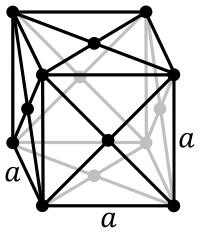
Photo from wikipedia
Background Residential radon exposure is known to be an important risk factor for the development of lung cancer. The objective of this study was to calculate the disease burden of… Click to show full abstract
Background Residential radon exposure is known to be an important risk factor for the development of lung cancer. The objective of this study was to calculate the disease burden of lung cancer attributable to residential radon exposure in Korea. Methods We calculated the national exposure level using Korean national radon survey data from 2011 to 2014, and house structure distribution data from each administrative region. Using the exposure-risk function, the population attributable fraction (PAF) was calculated and applied to calculate the disease burden for lung cancer attributable to residential radon exposure. Results Residential radon exposure levels were the highest, at 116.4 ± 50.4 Bq/m3 (annual mean radon concentration ± standard deviation) in detached houses, followed by 74.1 ± 30.0 Bq/m3 in the multi-family dwellings, and 55.9 ± 21.1 Bq/m3 in apartments. The PAF for lung cancer, due to long-term radon exposure in Korean homes, was 6.6% and 4.7% in men and women, respectively. The total disease burden of lung cancer attributable to residential radon exposure was 14,866 years of life lost (YLL) and 1,586 years lost due to disability (YLD) in 2013. Overall, 1,039 deaths occurred due to residential radon exposure, of which 828 were in men and 211 in women. Conclusion The smoking rate of men in Korea exceeded 70% in the 1990s, and is still near 40%. Although the size of the effect varies depending on the estimation method, it is a critical aspect as a risk factor of lung cancer because of the synergistic relationship between smoking and radon exposure. Because the Korean society is rapidly aging, population who were formerly heavy-smokers are entering a high-risk age of lung cancer. Therefore, it is necessary to inform the public about the health benefits of reduced radon exposure and to strengthen the risk communication.
Journal Title: Journal of Korean Medical Science
Year Published: 2018
Link to full text (if available)
Share on Social Media: Sign Up to like & get
recommendations!